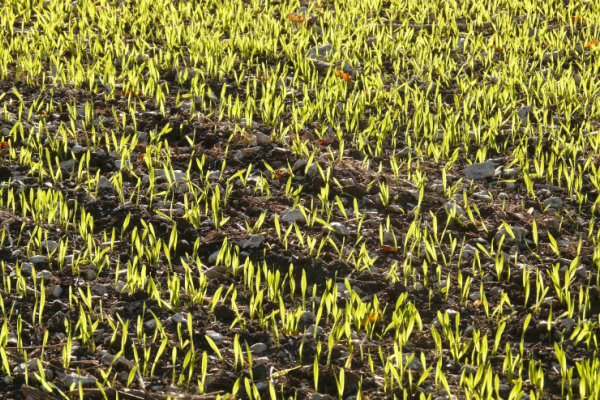Winter Barley Variety Choices
2 August 2021There has been really good progress in yield potential in some of the newer two and six row winter barley options for Scotland. Other agronomic traits are worth looking at too in the pen portraits below. Some carry specific weaknesses to key disease or differ markedly in standing strength. Early maturity can be important and we have also marked a few as doing particularly well on heavy soils.
Two-row feed varieties
KWS Hawking: Intermediate yield (101) and good specific weight (68.7). Resistance to mildew is poor (5), whilst resistance to Rhynchosporium and net blotch is intermediate (6). It has very good standing ability (8) and performs relatively well on heavy soils.
LG Mountain: Very high yielding (105) with very good specific weight (69.4). It has poor disease resistance (5) to mildew, Rhynchosporium and net blotch. Good straw strength (7) and early maturing (-1). Performs well on heavier soils. Currently the leading two-row variety.
KWS Tardis: A new very high yielding variety (105) with very good specific weight (69.1). Good resistance to Rhynchosporium (7), but weak against mildew and net blotch (5). Very stiff straw (8) and early maturity (-1). Limited data indicates very good yields on heavier textured soils.
Bolton: A new variety with very high yield (105) and good specific weight (68.6). Intermediate resistance to mildew (6), but poor against Rhynchosporium (5) and net blotch (5). Very good standing ability (8).
Bordeaux: A new very high yielding variety (104) with very good specific weight (69.9) and low screenings (5.5%). It has intermediate resistance to mildew (6) but is very weak to Rhynchosporium and net blotch (4). Good straw strength (7).
KWS Orwell: Established variety with intermediate yield (101) and specific weight (68.1). It had intermediate resistance to Rhynchosporium (6) but is very weak against mildew (3) and has weakness to net blotch (5). Has very stiff straw (8) and early maturity.
Valerie: Has intermediate yield (100) and excellent specific weight (70.0). It has the best all-round grain and agronomic features among the two-row varieties, including relatively good untreated yield, with intermediate disease resistance (6). It has stiff straw (8) and early maturity.
KWS Tower: Has been a popular feed variety but is becoming outclassed for both treated untreated yield. It has intermediate specific weight (67.6), with very stiff straw (8) and early maturity (-1). Poor resistance to mildew (5) and Rhynchosporium (5), and very poor against net blotch (4).
Six-row feed varieties
Funky: A conventional six-row with modest yield (104), but good specific weight (69.0). Screenings can be high (16.1). It has good resistance to Rhynchosporium (7) but is weak against mildew (5) and net blotch (5). Very stiff straw (8), and early maturity (-1). Performs well on different soil textures.
SY Kingston: A new hybrid with outstanding yield (108) and very good specific weight (69.7). Untreated yield is relatively good, with good mildew resistance (7) and intermediate ratings for Rhynchosporium (6) and net blotch (6). Straw stiffness is towards good (7), but a good PGR programme is needed when lodging risk is high. It is early maturing (-1)
Belmont: An established hybrid variety with very high yield (107) and intermediate specific weight (68.7). Untreated yield is relatively poor, with weakness to mildew (5) and next blotch (5), though resistance to Rhynchosporium is good (7). Straw stiffness is towards good (7), but a PGR programme is needed to reduce lodging risk.
SY Kingsbarn: A hybrid variety with very high yield (107) and very good specific weight (69.7). Resistance to mildew is good (7), and intermediate to Rhynchosporium (6), but weak to net blotch (5). Straw stiffness is towards good (7) but lodging high risk can be reduced with a PGR programme.
SY Thunderbolt: A new hybrid variety with very high yield (107) and very good specific weight (69.6). Resistance to mildew is very good (8), and intermediate to both Rhynchosporium and net blotch (6). Straw stiffness is intermediate (6), and a robust PGR programme is needed to reduce lodging high risk. It is early maturing (-1).
Bazooka: A well-known hybrid with competitive yield (105) and very good specific weight (69.2). Resistance to mildew is weak (5), and intermediate to Rhynchosporium (6) and net blotch (6). Straw stiffness is good (7), but a PGR programme will reduce lodging risk.
Steve Hoad and Fiona Burnett, Scotland’s Rural College for the Farm Advisory Service
Sign up to the FAS newsletter
Receive updates on news, events and publications from Scotland’s Farm Advisory Service

